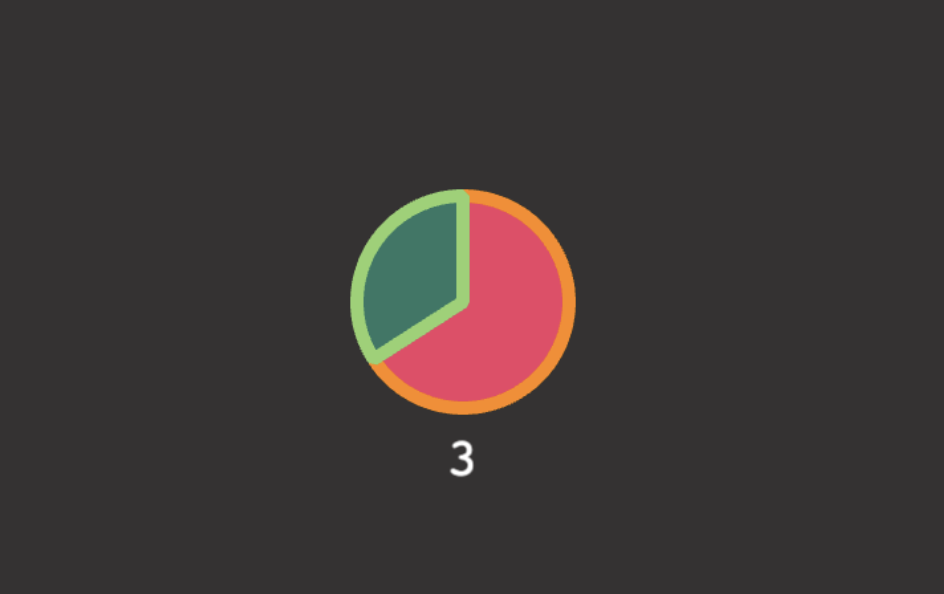How to create a Pie Timer (Circular Timer) in Phaser
Welcome back everyone! A pie timer, circle timer, or wheel timer is quite popular in game development. Some may find it difficult to make, but it is not actually. In this tutorial, I’ll guide you through the process of implementing a pie timer using Phaser 3 and TypeScript. You can extend it later according to your purpose.
create a class named PieTimer and extend it from Phaser.GameObjects.Graphics class.
export default class PieTimer extends Phaser.GameObjects.Graphics {
constructor(){ }
}
now we will add some properties in our class so we can config it as our need.
export default class PieTimer extends Phaser.GameObjects.Graphics {
declare x: number; // x position
declare y: number; // y position
declare alpha: number; // alpha
declare scene: Scene; // scene object
radius: number; // radius
borderThickness: number; // border thickness
bgColor: number; // background color
borderColor: number; // border color
indicatorColor: number; // forground color
indicatorBorderColor: number; // forground border color
lifeSpan: number; // total duration till finish
targetValue: number; // end - now
currentValue: number; // current value
text: GameObjects.Text; // coutner text object
}
constructor(scene: Scene, config) {
super(scene);
const { x, y, alpha, radius } = config;
this.x = x;
this.y = y;
this.radius = radius;
this.alpha = alpha;
this.depth = 100;
// add the gameobject to the scene
this.scene.add.existing(this);
}
all good so far, now we will create a couple of functions
init() : used for initializing our class
draw(): used for rendering the pie timer
startTick() : animating the timer
here is the complete PieTimer class
import { Display, GameObjects, Scene } from "phaser";
export default class PieTimer extends Phaser.GameObjects.Graphics {
declare x: number; // x position
declare y: number; // y position
declare alpha: number; // alpha
declare scene: Scene; // scene object
radius: number; // radius
borderThickness: number; // border thickness
bgColor: number; // background color
borderColor: number; // border color
indicatorColor: number; // forground color
indicatorBorderColor: number; // forground border color
lifeSpan: number; // total duration till finish
targetValue: number; // end - now
currentValue: number; // current value
text: GameObjects.Text; // coutner text object
constructor(scene: Scene, config) {
super(scene);
const { x, y, alpha, radius } = config;
this.x = x;
this.y = y;
this.radius = radius;
this.alpha = alpha;
this.depth = 100;
// init
this.init();
// add the gameobject to the scene
this.scene.add.existing(this);
this.draw();
}
init() {
this.borderThickness = 10;
this.bgColor = 0xEE4266;
this.borderColor = 0xFF8911;
this.indicatorColor = 0x2C7865;
this.indicatorBorderColor = 0x90D26D;
this.lifeSpan = 10 * 1000; // ms
this.targetValue = 10000;
// counter text
this.text = this.scene.add.text(this.x, this.y+120, '0', {fontSize: 40}).setOrigin(0.5).setDepth(this.depth);
}
draw(tween?: Phaser.Tweens.Tween) {
this.clear()
.fillStyle(this.bgColor, this.alpha)
.fillCircle(0, 0, this.radius)
.lineStyle(this.borderThickness, this.borderColor)
.strokeCircle(0, 0, this.radius)
.fillStyle(this.indicatorColor, 1)
.beginPath();
// current pie value
this.currentValue = (360 / this.lifeSpan) * this.targetValue;
this.slice(
0,
0,
this.radius,
Phaser.Math.DegToRad(0),
tween ? Phaser.Math.DegToRad(-this.currentValue + tween.getValue()) : Phaser.Math.DegToRad(-this.currentValue),
true,
)
.setAngle(-90)
.fillPath()
.lineStyle(this.borderThickness, this.indicatorBorderColor)
.strokePath()
.closePath();
}
getCurrentValue(): number {
return this.currentValue;
}
startTick() {
const pieTween = this.scene.tweens.addCounter({
from: 0,
to: this.currentValue, // modify here
duration: this.targetValue, // milliseconds
onUpdate: (tween: Phaser.Tweens.Tween) => {
const value = Math.round((this.lifeSpan - tween.totalElapsed) / 1000);
this.text.setText(value.toString());
this.draw(tween);
// console.log('graphics', tween.progress);
},
onComplete: () => {
console.log('timer completed clear graphics');
pieTween.stop();
},
});
}
}
now inside your create function call the pie timer class like this way
const config = {x: this.camera.centerX, y: this.camera.centerY, alpha: 1, radius: 80};
const indicator = new PieTimer(this, config);
indicator.startTick();
you should see a pie timer at you desired coordinate.

